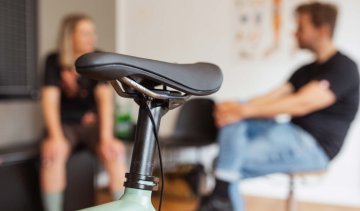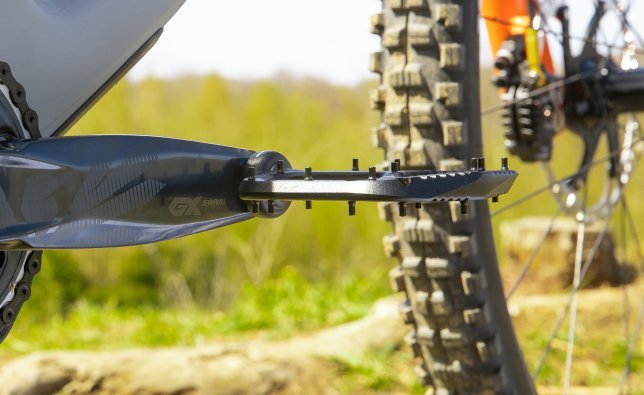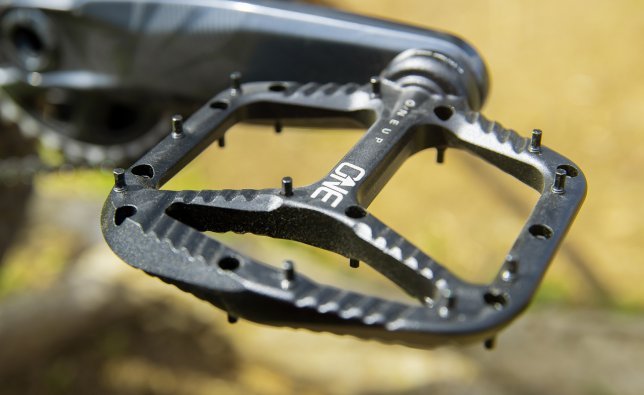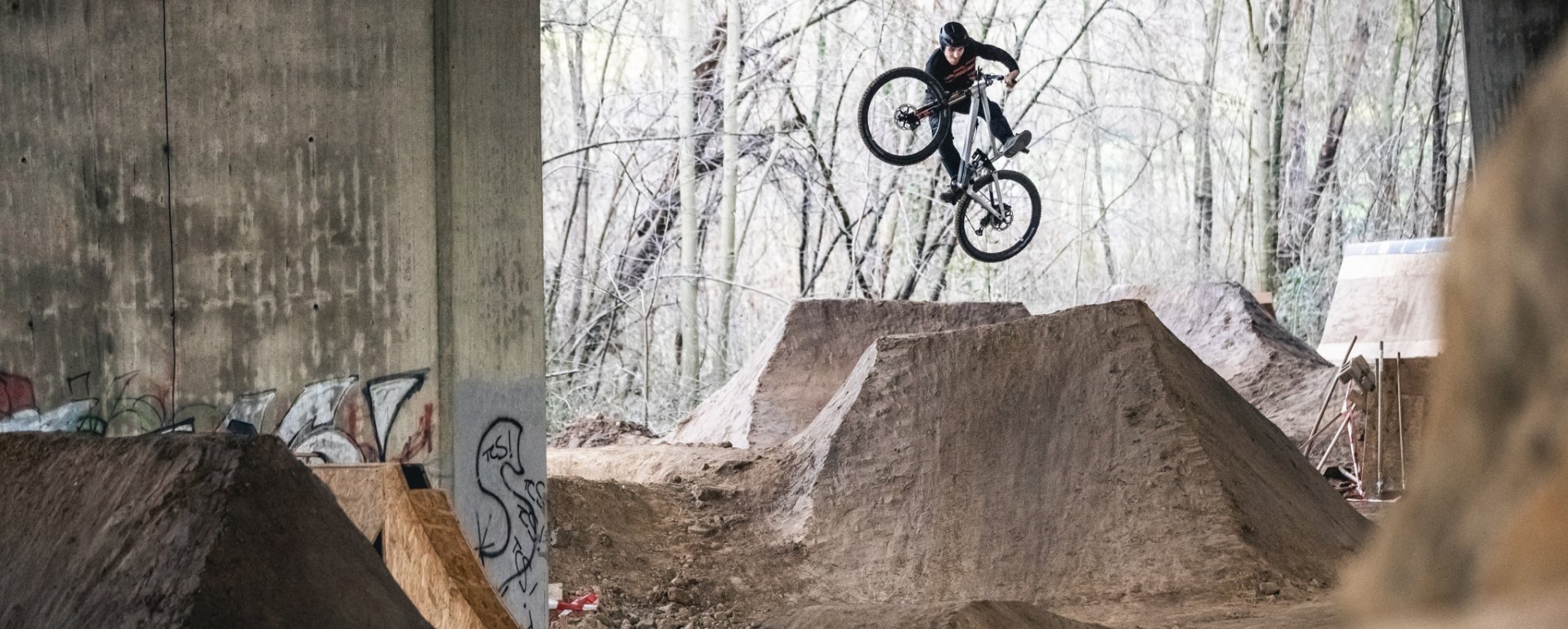
Product test: Thermoformable bike saddles from ...
A bike saddle that adapts to your anatomy? We have tested the thermoformable saddles from REFORM for you, which promise exactly that.
The variety of platform pedals, also called flat pedals, is vast. Here’s what to look for when buying a pedal so that it suits you and your riding style.
The variety of flat pedals (also called platform pedals) is diverse. Some are made of aluminium and are particularly large, some have a number of pins, others are made of plastic, and are rather narrow and light. It’s all about giving your shoes the right kind of support. However, not every pedal is ideal for every application. We’ll give you a look at the most important shapes and constructions, and give you tips on what to buy.
Platform pedals are most common on mountain bikes and casual bikes. Whether downhill or enduro: in mountain biking, we usually talk about flat pedals, where the focus is on maximum grip and control. No one likes to lose contact with the bike by accident while off-road. This is also true when you’re riding a touring bike or one for everyday life, but compared to technical singletrack, you are not as jolted and rarely catch air. This means that the pedals don't have to bite quite as hard into the soles of the shoes to ensure sufficient safety. Road bikes with platform pedals are rarely seen these days, but they do exist. Stylish cage pedals for your vintage road bike should be suitable for use with hooks and straps. Models for a track bike or urban fixie are narrower so that they do not touch the ground while cornering. Narrower and generally smaller are of course also pedals for kids bikes.
Modern flat pedals for mountain bikes usually consist of a relatively large and flat platform with pins. The platform – it is also called a cage when the construction is quite open – forms the basis of the pedal. It should be as large as possible, but also no larger than necessary. Tall people with large feet benefit from a larger contact surface so that they do not hang halfway in the air with the ball of their foot. If you have rather small feet, pedals that are wider than your shoes will not bring you any advantages: the wider your pedals are, the more likely you are to bump or touch down on the ground. In general, it is a matter of finding a personal compromise. Most models measure around 100 millimetres from the crank to the outer edge. Some manufacturers, such as Shimano with the XT Flat Pedal and crankbrothers with the Stamp series, offer their pedals in different sizes. They vary not only the width but also the length of the platform.
Besides the size of the platform, height also plays an important role. In recent years, flat pedals have become increasingly flat. Models like the OneUp Components aluminium pedals are only 12 millimetres high. The advantage is that you stand with your foot closer to the pivot axis and run less risk of the pedal "rolling away" under your foot. Of course, a flat pedal also brings more ground clearance on demanding terrain. Many pedals are also concave, where the platform is thinner in the middle than at the edges, and your foot rests more "in" the pedal than just on top of it. However, one should look carefully, as it is not the platform alone that is the decisive factor. Some have a flat platform or are slightly thicker where the axle and bearing are, but ride through placement and length of the pins as if they were concave. Making the platform thinner on the outside than in the middle of the pedal gives you ground clearance. How open the pedal body is designed plays a big role in stability, and how well the pedal performs in muddy conditions. The more open, the less it will clog. The edges of the pedal body also play a role off-road – a bevelled front edge helps to avoid getting caught in contact with the ground.

In the MTB sector, pedals have become increasingly flat. The advantage: proximity of the foot to the pedal axle, as well as more ground clearance. © bc GmbH & Co. KG
For a long time, the platforms of high-quality pedals were mainly made of aluminium. Plastic was really only used on inexpensive, BMX or dirtjump bikes back then. These days, there are very good plastic pedals with which you can go off-road without hesitation. They are often cheaper, lighter and do not draw as much heat from the foot when it is cold. Polyamide-reinforced plastics can also withstand contact with rocks and hard objects. It almost sounds as if aluminium can come off, but that is not the case at all. On the contrary, aluminium pedals are usually more robust and durable, and can also be designed to be flatter. What does the fashion police have to say? Aluminium is available in chic anodised colours, but on some bikes colourful plastic can be a good match. Are you a fan of lightweight and finer-quality components? Then be sure to also check out Magnesium pedals!
Most MTB pedals rely on small metal pins or screws that interlock with the profile of the shoe sole and are embedded in the soft rubber compound of modern MTB shoes. How well this works depends on the number, placement and nature of the pins. Long threaded pins grip the sole more aggressively, but also wear the shoe out faster. Thinner pins also bore better into the sole, but they bend more easily when they come into contact with rocks. If pins are bent after a strong impact, then you have to think about interchangeability. Whether the pins are screwed on from above or below determines how easily you can replace them. On some pedals, like those from Chromag, the length or height of the pins can be adjusted using washers. Besides texture, the number and placement of the pins is crucial. More does not automatically equate to better. For example, pedals without pins in the middle cause less pressure where your foot stands up. One advantage of flats in contrast to clipless pedals is that you can also vary the position of your foot. Having too much grip reduces this freedom. It is a question of personal preference, and as with all questions regarding ergonomics, a little bit of experimentation is worthwhile. Pedals that are equipped with many pins can also be used with fewer pins.

The pins press into the sole of your shoes and give you optimal grip on the pedals. © bc GmbH & Co. KG
A basic disadvantage of pins is that they can quickly scratch your shins and calves or damage your trousers if you fall or just push the bike. They also wear out the soles of the shoes a lot. On everyday bikes, where not so much grip is needed, other alternatives tend to be used. The predecessor of the modern flat pedal is the classic cage pedal, known in German as the Bärentatze (bear’s paw), which one often sees on touring bikes these days. A circumferential, serrated metal band encloses the pedal body as a cage and provides a varying amount of support depending on the shape of the serrations. Bill Grove built the first pedal of this type under the Titron brand and called it the “Bear Trap” instead of “Bear’s Paw" because of the visual similarity. As an alternative to the cage, there are pedals with a surface made of anti-slip rubber or grip tape. These variants are particularly gentle on more delicate shoes, and are therefore very popular for everyday use.
Pedals need bearings in order to rotate around the axle as desired. As a rule, sealed ball bearings (“cartridge bearings"), plain bearings or a combination of both are used. Plain bearings – often referred to as bushings – have the advantage that they are light and take up very little space, and the pedal can be built flatter. Ball bearings, on the other hand, usually run more easily and are more durable. However, the durability in both cases depends on how well the pedal is sealed and how you treat it. The bearings should not be treated with a high-pressure cleaner. It is best to find out in good time how easy it is to maintain the pedals you want and whether bearings and other spare parts are available.
The axle itself is a rather inconspicuous component, usually made of steel. For high-priced pedals, people like to save weight by using hollow drilled axles and/or titanium. Length is plays a role from an ergonomic perspective, but ultimately the size of the pedal platform is a more decisive factor.
When attaching pedals to the crank, you should keep in mind which tool is required. There are pedals that can be mounted with both hex tools and the classic 15-millimetre pedal wrench, but also models that only allow one option. Also, be careful not to mix up the left and right pedals when screwing them on, otherwise you will quickly ruin your cranks. The thread should be lightly greased in order to screw them in, and not too tight. Note the recommended torque and use either the washers that come with the pedals or cranks, or appropriate ones that are available separately. They compensate for unevenness in the fit and help to optimally support the pedal on the crank.
In order to be seen better by drivers and other cyclists in road traffic, the StVZO in Germany stipulates that you have to have reflectors on your pedals, but you ought to consult your local transportation authority to determine whether similar regulations apply in your region. You should definitely pay attention to this on your city or commuter bike, however pedals for urban use come readily equipped with these. A special feature in the MTB sector is the Saint Pedal from Shimano, which has optionally-available reflectors.
